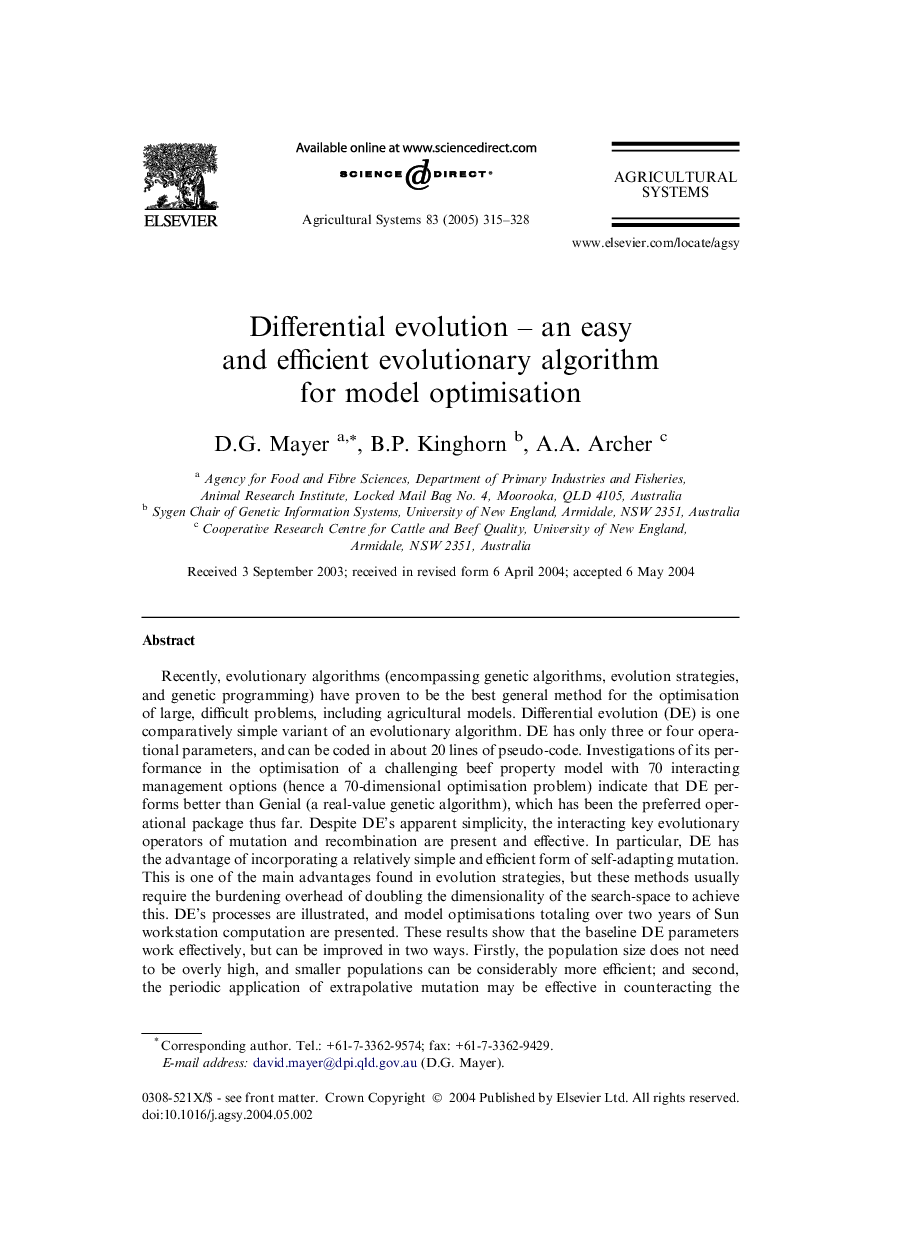| Article ID | Journal | Published Year | Pages | File Type |
|---|---|---|---|---|
| 9469277 | Agricultural Systems | 2005 | 14 Pages |
Abstract
Recently, evolutionary algorithms (encompassing genetic algorithms, evolution strategies, and genetic programming) have proven to be the best general method for the optimisation of large, difficult problems, including agricultural models. Differential evolution (DE) is one comparatively simple variant of an evolutionary algorithm. DE has only three or four operational parameters, and can be coded in about 20 lines of pseudo-code. Investigations of its performance in the optimisation of a challenging beef property model with 70 interacting management options (hence a 70-dimensional optimisation problem) indicate that DE performs better than Genial (a real-value genetic algorithm), which has been the preferred operational package thus far. Despite DE's apparent simplicity, the interacting key evolutionary operators of mutation and recombination are present and effective. In particular, DE has the advantage of incorporating a relatively simple and efficient form of self-adapting mutation. This is one of the main advantages found in evolution strategies, but these methods usually require the burdening overhead of doubling the dimensionality of the search-space to achieve this. DE's processes are illustrated, and model optimisations totaling over two years of Sun workstation computation are presented. These results show that the baseline DE parameters work effectively, but can be improved in two ways. Firstly, the population size does not need to be overly high, and smaller populations can be considerably more efficient; and second, the periodic application of extrapolative mutation may be effective in counteracting the contractive nature of DE's intermediate arithmetic recombination in the latter stages of the optimisations. This provides an escape mechanism to prevent sub-optimal convergence. With its ease of implementation and proven efficiency, DE is ideally suited to both novice and experienced users wishing to optimise their simulation models.
Related Topics
Life Sciences
Agricultural and Biological Sciences
Agricultural and Biological Sciences (General)
Authors
D.G. Mayer, B.P. Kinghorn, A.A. Archer,
